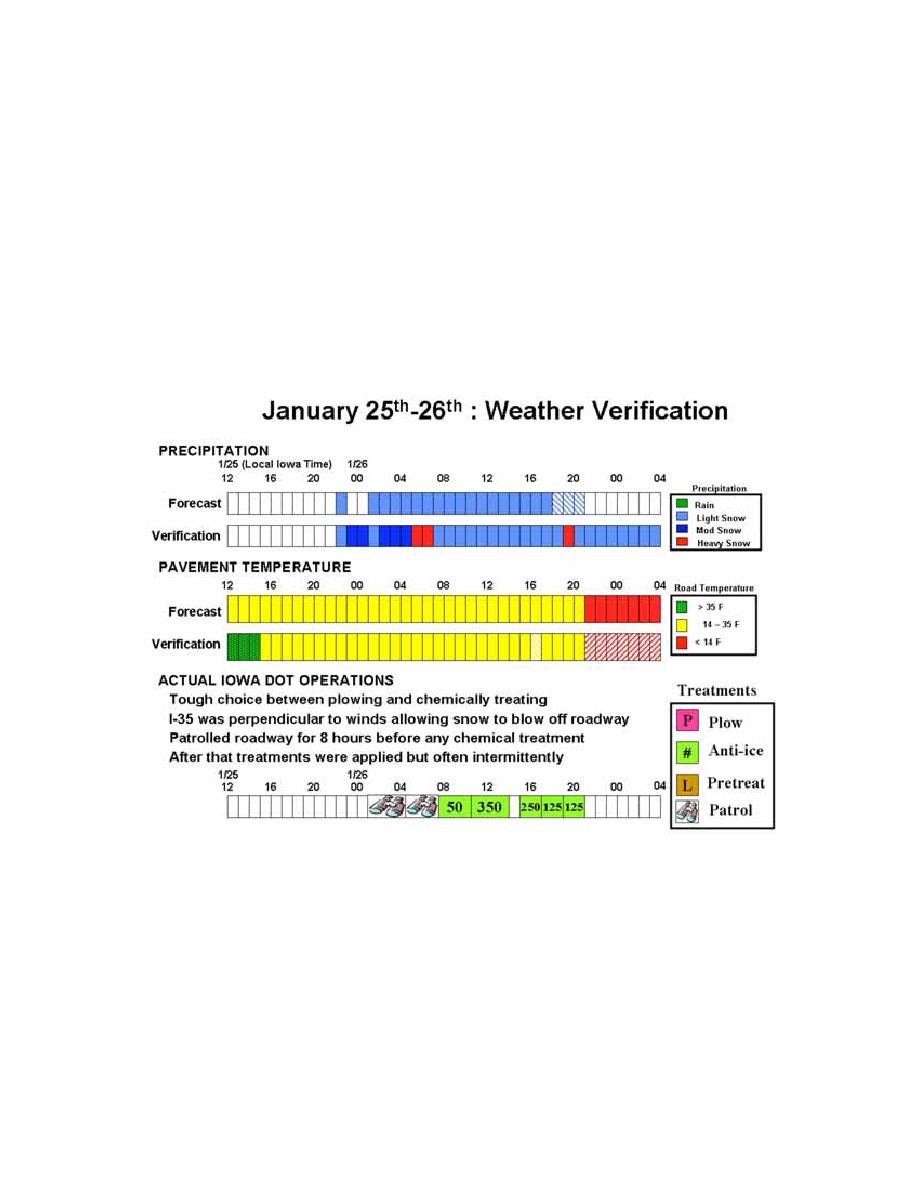
northbound lanes quite readily, however, the grassy median area between the north and
southbound lanes was capturing much of this snow and slowly spilling it onto the
southbound lanes. The RCTM does not currently take into account the impact of blowing
snow and, as such, we would expect that the recommended treatments would more
accurately match the more wind-protected southbound lanes.
Total treatment recommendations for I35 were 600 lbs/lane-mile while the actual
southbound operations exceeded 900 lbs/lane-mile. In anti-icing operations, applying the
chemical earlier often results in less chemical being needed overall. The Ames garage
struggled with a difficult asymmetric treatment condition that was out of the scope of the
current MDSS system. Fig. 11.24b shows that by late morning on the 26th conditions on
US30 (and I35) were already improving dramatically.
Fig. 11.23. Forecasted and actual precipitation, road temperatures and treatment
recommendations for I35N (Ames) during January 25-26.
124



 Previous Page
Previous Page
